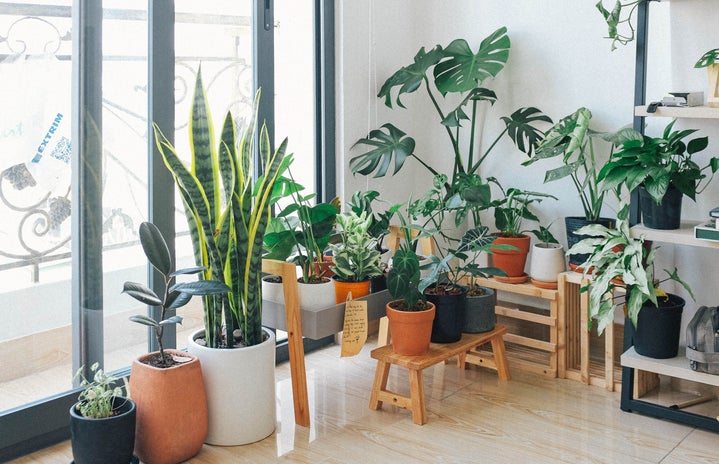A beginner’s guide to healthy plants
I used to think I had a black thumb curse. My friends and relatives around me always had green plants thriving in their living rooms, while mine always ended up brown and slumped over.
At best I could keep them for three weeks, but it wasn’t soon after that I would have to take the pot to the grave. I always felt so defeated (not to mention that all of the money I spent on my failed attempts left my wallet lacking). This all changed when one of my friends went off to college and left me with her 10 (yes 10!) plants. Knowing that I was anxious with the task of keeping her most prized possessions alive, she left me with directions for each plant. Now, over a year later, those 10 plants are still healthy and strong just like she left them. Without further adieu, let me introduce the tips my plant-lover friend gave me that are keeping her plants green and healthy to this day.
1. Sticky Note Each Plant
The first thing my friend did when she was leaving for college was write out a sticky note for each plant with all the information that I needed to keep it alive. This included the name of the plant, how often to water it, how dry to keep the soil between watering, and how much sunlight it needed. Going from zero to 10 plants, having all the information I needed in one place definitely was the main factor that helped me keep them alive.
2. Pick a “Plant Day”
If you have low-medium light plants like me, you won’t need to water your greens every couple of days but rather every couple of weeks. Since it can be easy to lose track of when you watered, I suggest choosing one day of the week as your “plant day.”By scheduling one day to take care of your plants, you are able to keep on top of the plant’s needs even on days it doesn’t need to be watered.
3. Test the Soil
If you’re anything like me, your instincts want to keep the plant’s soil really wet. In reality, overwatering any plant can kill them (I’ve learned the hard way too many times). If you’re not sure whether your plant needs some water, use your finger to test the soil. Often, the top layer will look and feel dry. Stick your finger about 2 inches into the soil and feel out the moisture level. Some plants like to dry out between watering while some don’t. Make sure to know what works best for your plant and add the information to its sticky note.
4. Have Fun with it!
I’m a firm believer that the best thing you can do for your plants is to just have fun taking care of them! Sure, plants can be aesthetically pleasing, but they are also rewarding to look after. I love talking to my plants like they are people and touching their leaves. While I don’t know if this really brings them any benefits, I find it fun and therapeutic.
Over this past year, I’ve learned not just about plants, but also about myself. I never used to like nature or plants. They always felt like a burden or another task that I would eventually fail at. But once I adopted plants from my friend, they became a joy I didn’t know I needed. With the tips she left me with, my black thumbs became green, and for the first time ever I was able to experience the joy from plants that all those around me had been experiencing for years. So, to the friend who opened up my eyes (and thumbs) to a new way of life, thank you. Your plants are still alive well.

